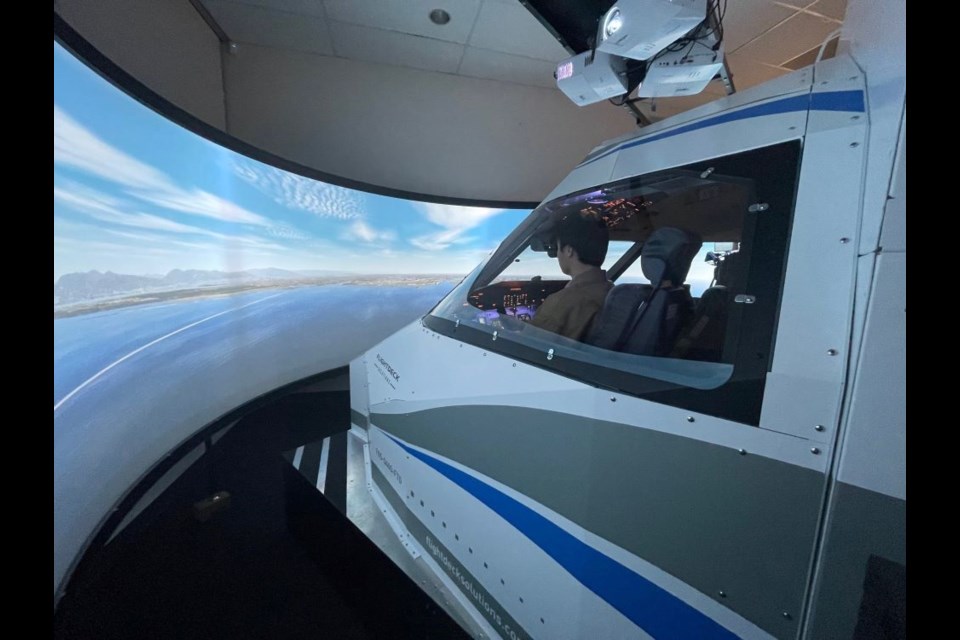Students at BCIT’s Aerospace Technology Campus in Richmond can now get a real feel for what it’s like to fly a plane.
The aviation program has two new flight simulators that aircraft maintenance engineering students can use to practice flying a plane and for simulations such as on-board fires and other emergencies.
One simulator is a De Havilland Dash8-Q400, used on shorter flights such as Vancouver to Kelowna, and the other is a Boeing 737 Max, used on longer flights.
The Richmond News got a “ride” in the De Havilland simulator on Friday, circling around YVR.
The two flight simulators cost about $1 million including installation, with funding coming from the Pacific Economic Development Agency of Canada (PacifiCan).
Inside each enclosed flight deck is a 220-degree wrap-around screen where students get a "tactile experience," according to a BCIT press release.
There are operational switches and knobs for all key functions, as well as flight controls for a "realistic feel" under various flying conditions.
"Within each device, there is space for an instructor to play and pause flight scenarios, change weather, or set-up failures or malfunctions for the students to respond to – all of which mimics a real-world flying experience," according to BCIT.
Gerry Egan, associate dean of aerospace at BCIT, said the simulators integrate a full understanding of how everything comes together in order to operate an aircraft.
“(Students) go through their courses learning system by system by system,” Egan said. “But being able to put it all together, these simulators help with connecting the dots.”
Weerawarna Fernando, who is just graduating with his diploma in aircraft maintenance engineering and is heading off to do an internship at Maxcraft Avionics in Pitt Meadows, is excited about the new technology coming on board for students.
When he was going through the diploma program, Fernando used the first simulator the post-secondary institute had, which was on a computer screen.
“…seeing it is really important - that’s the final piece of the puzzle for people who are brand-new to this,” Fernando said.
Students do practice on real airplanes and learn how to start an engine, Egan said, but they can’t practice something like putting out a fire in a real plane.
“You wouldn’t want to put anyone’s life in danger, whereas here you can simulate those different scenarios,” Egan said.
Egan said BCIT was also "grateful" they found a Canadian company, FlightDeck Solutions, to supply them with the simulators.
The simulators are also available for industry to rent out, Egan added, for example, an airline might use it for a “sim evaluation” when recruiting pilots. It can also be used for ground operations training, for example, when the ground crew need to train for a “D Licence,” that is, to drive service vehicles on and around runways.
📣 Got an opinion on this story or any others in Richmond? Send us a letter or email your thoughts or story tips to [email protected].
📲 To stay updated on Richmond news, sign up for our daily headline newsletter.
💬 Words missing in article? Your adblocker might be preventing hyperlinked text from appearing.



